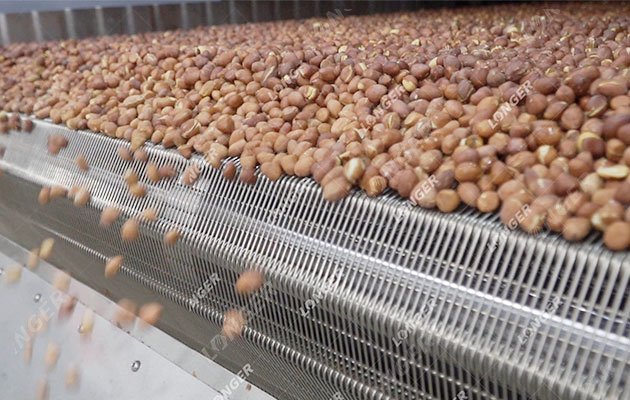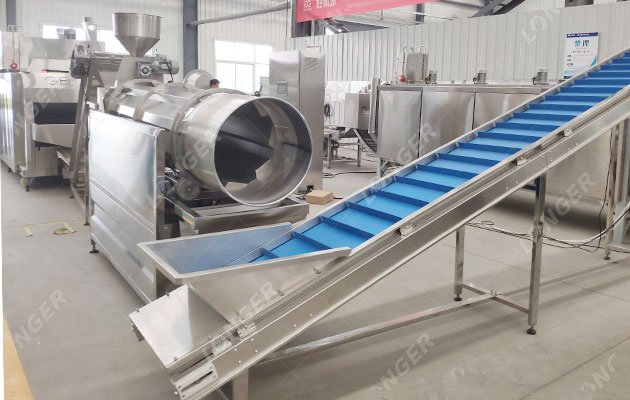What is the Purpose of Roasting in Peanut?
In the world of culinary delights, few snacks are as beloved and versatile as peanuts. Whether you enjoy them straight out of the shell, transformed into creamy peanut butter, or coated in a variety of flavors, one common factor remains: the process of roasting. So, what is the purpose of roasting in peanut?
In this article, we delve into the fascinating world of peanut roasting, exploring its purpose, methods, and the undeniable magic it brings to your taste buds.

The Purpose of Peanut Roasting
At its core, roasting is a method of cooking that involves subjecting food to dry heat. In the case of peanuts, this process serves multiple essential purposes that elevate both their flavor and texture.
In this article, we delve into the fascinating world of peanut roasting, exploring its purpose, methods, and the undeniable magic it brings to your taste buds.

The Purpose of Peanut Roasting
At its core, roasting is a method of cooking that involves subjecting food to dry heat. In the case of peanuts, this process serves multiple essential purposes that elevate both their flavor and texture.
1. Enhanced Flavor: Roasting peanuts releases a symphony of complex flavors. The Maillard reaction, a chemical reaction between amino acids and reducing sugars, is the star player in this transformation. As the peanuts heat up, this reaction gives rise to a range of nutty, toasty, and sometimes even sweet flavors, creating a richer and more satisfying taste profile.
2. Improved Texture: Raw peanuts are crunchy, but roasting takes their texture to a whole new level. As the nuts heat up, the moisture within them evaporates, leading to a crispy and crunchy texture that delights the senses. This transformation is especially evident in the contrast between the crunchy exterior and the tender interior of a perfectly roasted peanut.
3. Extended Shelf Life: Roasting isn't just about immediate pleasure; it also plays a role in preserving the nuts. The heat during roasting helps reduce moisture content, making the peanuts less susceptible to mold and bacterial growth. This extended shelf life ensures that you can savor your roasted peanuts for longer periods.
Methods of Peanut Roasting
While the end goal of roasting is consistent—enhancing flavor and texture—the methods employed can vary, resulting in a range of peanut products that cater to diverse preferences. Some common methods include:
1. Dry Roasting: The simplest approach, dry roasting involves placing peanuts in a single layer and exposing them to direct heat, either in an oven or on a stovetop. This method produces a more intense nutty flavor and a slightly drier texture.
2. Improved Texture: Raw peanuts are crunchy, but roasting takes their texture to a whole new level. As the nuts heat up, the moisture within them evaporates, leading to a crispy and crunchy texture that delights the senses. This transformation is especially evident in the contrast between the crunchy exterior and the tender interior of a perfectly roasted peanut.
3. Extended Shelf Life: Roasting isn't just about immediate pleasure; it also plays a role in preserving the nuts. The heat during roasting helps reduce moisture content, making the peanuts less susceptible to mold and bacterial growth. This extended shelf life ensures that you can savor your roasted peanuts for longer periods.
Methods of Peanut Roasting
While the end goal of roasting is consistent—enhancing flavor and texture—the methods employed can vary, resulting in a range of peanut products that cater to diverse preferences. Some common methods include:
1. Dry Roasting: The simplest approach, dry roasting involves placing peanuts in a single layer and exposing them to direct heat, either in an oven or on a stovetop. This method produces a more intense nutty flavor and a slightly drier texture.
2. Oil Roasting: Adding a touch of oil before roasting can result in peanuts that are not only flavorful but also slightly more indulgent. The oil helps conduct heat evenly, leading to a uniform roasting.
3. Seasoning and Flavoring: This method involves adding various seasonings and flavors to the peanuts before roasting, infusing them with an array of tastes, from savory to spicy to sweet.
Introducing the Peanut Roasting Line
3. Seasoning and Flavoring: This method involves adding various seasonings and flavors to the peanuts before roasting, infusing them with an array of tastes, from savory to spicy to sweet.
Introducing the Peanut Roasting Line
For businesses looking to offer the finest roasted peanuts, investing in a dedicated peanut roasting line is paramount. A modern peanut roasting line is equipped with cutting-edge technology that ensures consistent roasting, maximizes energy efficiency, and minimizes waste. The line can be tailored to handle various roasting methods, offering flexibility and versatility in meeting consumer demands.

In conclusion, peanut roasting is a time-honored technique that transforms ordinary peanuts into extraordinary snacks. Its ability to enhance flavor, improve texture, and extend shelf life makes it a critical step in the creation of various peanut products. Whether you're a peanut enthusiast or a business owner looking to elevate your product offerings, understanding the art and science of peanut roasting is key to achieving culinary excellence.

In conclusion, peanut roasting is a time-honored technique that transforms ordinary peanuts into extraordinary snacks. Its ability to enhance flavor, improve texture, and extend shelf life makes it a critical step in the creation of various peanut products. Whether you're a peanut enthusiast or a business owner looking to elevate your product offerings, understanding the art and science of peanut roasting is key to achieving culinary excellence.
Email: serena@machinehall.com
WhatsApp/Mobile: +8615515597212
Message
